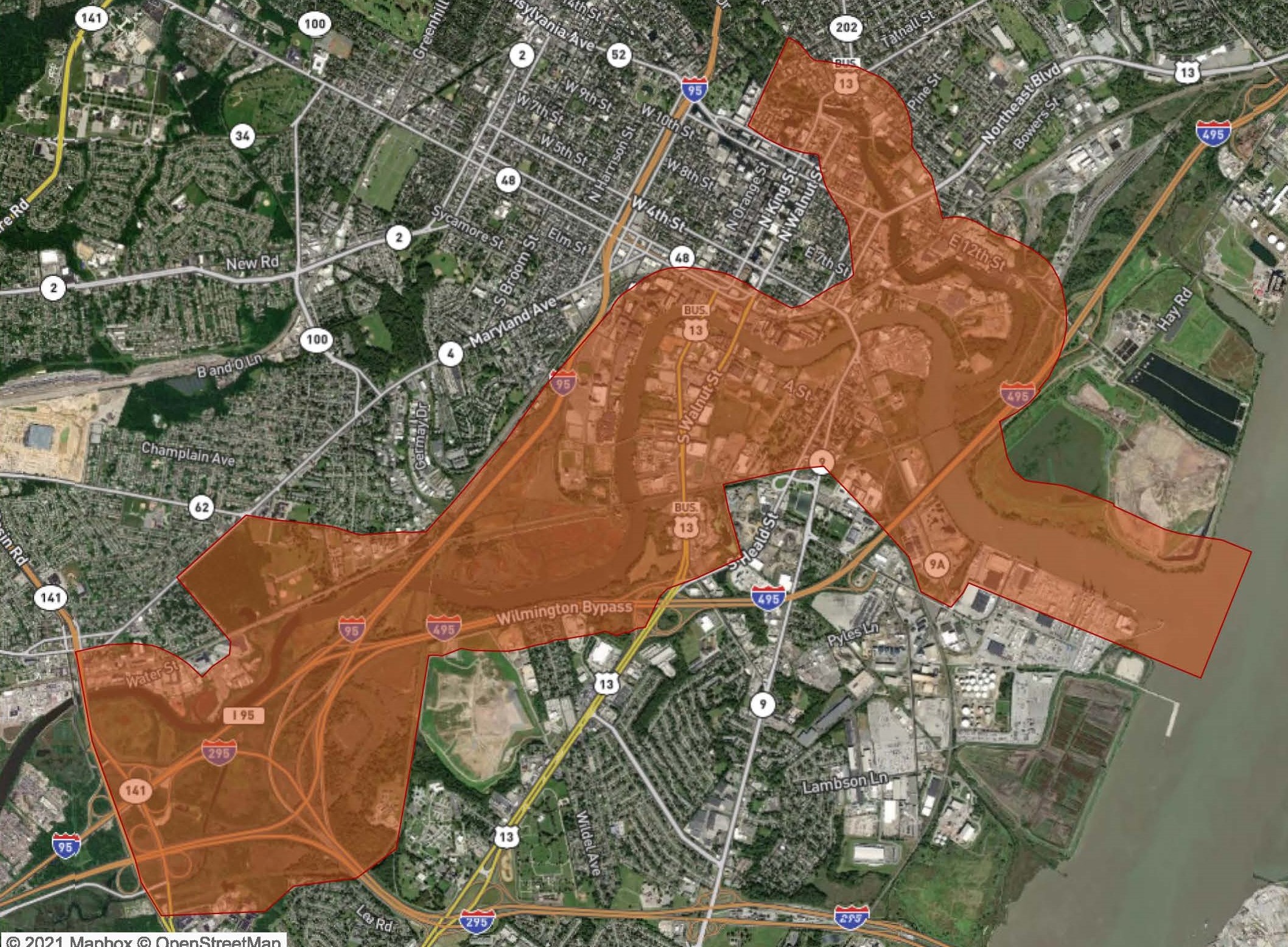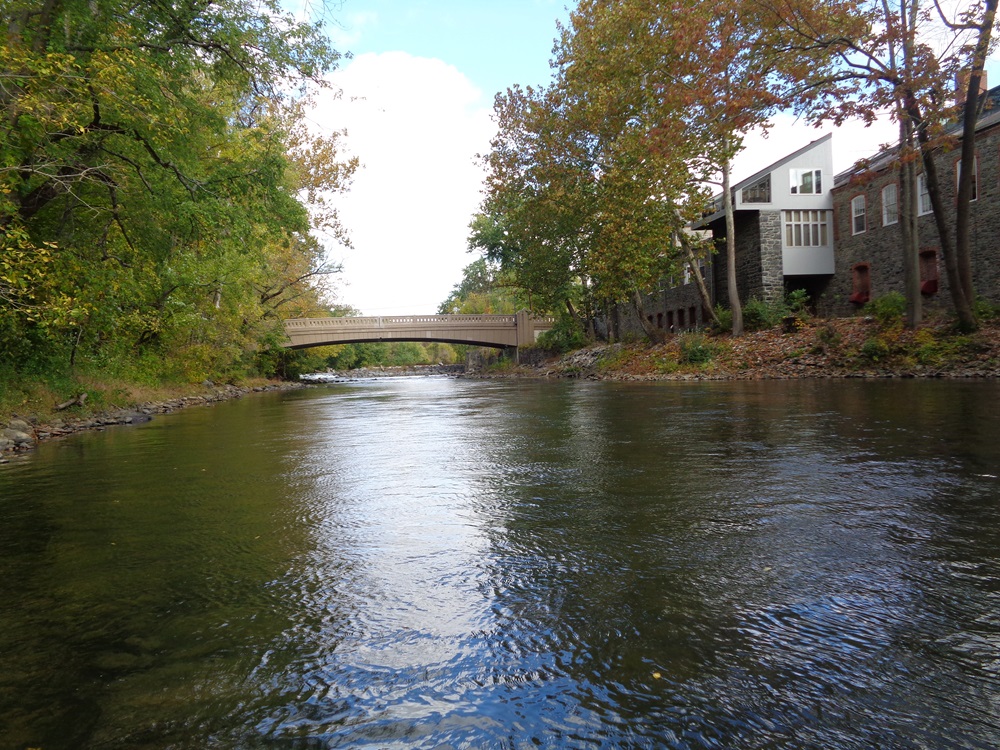In the 1600s, when Europeans began colonizing northern Delaware, their activity changed the history of the First State, with particular impact on the important river systems of the Brandywine and the Christina. Starting with the damming of the Brandywine River in the 1700s, over the next two centuries the area became home to heavy industry as a result of the Industrial Revolution. One of the unforeseen consequences of this economic growth was the contamination of the Christina and Brandywine rivers, a price that we are still paying centuries later.
Today, the Delaware Department of Natural Resources and Environmental Control is working to change that. Alongside around two dozen partners, from other state agencies to the city of Wilmington to conservation-focused nonprofits, DNREC is attempting to clean up the Christina and Brandywine rivers in a program known as the Christina-Brandywine River Remediation Restoration & Resilience initiative, or CBR4.

The project area, which consists of nearly 2,200 acres around the Christina and the Brandywine, stretches from Del. Route 141 east to the Delaware River following the Christina River corridor and along the Brandywine River corridor north to Brandywine Park.
“We’re really trying to address that legacy of contamination, restoring the native ecology and then also having a forward-thinking mindset to prepare for climate change as well as other threats. Ultimately, the goal is to make these rivers as fishable, swimmable and drinkable as possible in the shortest timeframe,” Jordana Cutajar, a resilience planner with the DNREC Division of Climate, Coastal and Energy, told attendees during a presentation at the Delaware Wetlands Conference in February 2024.
The idea stems from DNREC’s Whole Basin Management initiative, which was started in the 1990s as a way of bringing different DNREC programs together to protect the state’s natural resources. This initiative developed into the Watershed Approach to Toxics Assessment and Restoration, a program focused on cleaning up watersheds impacted by toxic pollutants like PCBs, dioxins and furans, mercury and organochlorine pesticides.
A comprehensive sampling of the Christina River Basin in 2015 examined fish tissue, surface water and sediment, setting the stage for what is now CBR4.
While cleaning up centuries of pollution is a challenge, it also represents a tremendous opportunity, DNREC experts said.
Today, DNREC is working hard to address legacy contaminants in the lower Christina and tidal Brandywine. Doing so will improve public health and boost the local economy by allowing businesses to settle in the area and fully utilize the rivers for drinking, swimming, fishing and more.
It will also benefit the natural world, making the rivers more suitable for fish like striped bass, American shad and Atlantic sturgeon and rare plants like river bulrush, horned pondweed and spongy arrowhead.

The Christina River watershed is the site of the only true freshwater tidal wetlands in the First State. These wetlands, comprising more than 1,000 acres, have been designated key habitats for numerous creatures, including bald eagles, wood thrushes, eastern box turtles and rough green snakes.
“For us it’s been 10 years in the making, but it really just started to grow its own legs,” John Cargill, a hydrologist with the DNREC Division of Watershed Stewardship, said of the CBR4 initiative. “I picture it like a tadpole in my mind. For the longest time we were just swimming around in a puddle and it flooded a little bit, we got into the bigger water, and our legs are starting to grow now. It’s starting to walk on its own. The initiative is advancing in different ways without DNREC’s involvement, which is what we want it to.”
A number of historically marginalized communities are located along the rivers’ banks, from Southbridge on the Christina to the East Side and Northeast neighborhoods on the Brandywine. These neighborhoods have been strongly impacted by industry and flooding over the years, making them, as a 2023 report on the CBR4 states, “important potential beneficiaries and supporters of remediation, restoration, and recreation opportunities.” This fits with DNREC’s focus on environmental justice, which has become a key consideration in practically everything the department does.
Cargill pointed to the recently completed Southbridge Wilmington Wetlands Park, which aims to create a stormwater management facility to reduce flooding in Southbridge, restore and enhance existing wetlands and establish a new park for the community, as a similar example of what DNREC is trying to do.
Currently, the Department is conducting a multiyear sediment feasibility study that will provide an estimate of what it will cost to clean up sediments in the Christina and Brandywine rivers. While that is going on, projects related to restoration at Banning Park and the Kalmar Nyckel site are in the permitting phase, and the Riverfront Development Corporation is working on a restoration project.
Comparing the rivers to a bathtub, Cargill explained that before DNREC can truly tackle sediment in the Christina and the Brandywine, it must get a handle on pollutants entering the bodies of water.
“Everything up on the edges of the tub, that’s the upland. That’s where all the industry is, that’s where all the roads are, it’s where all the homes are, it’s where all the runoff comes from,” he said. “If we take care of what’s on the rim of the bathtub and make sure that nothing else is coming in or at least if we know what’s coming in and we control it, then we can turn our attention to all the stuff that’s gotten down in the bottom of the bathtub.”

A key part of this initiative, noted Todd Keyser, a hydrologist with the DNREC Division of Waste and Hazardous Substances, is creating a culture focused on working together, harnessing aspects of the ecosystem in unison and correcting past mistakes.
“CBR4 is an example of how we want to do restoration projects everywhere in Delaware. This is how we think others should be doing it too, because this is how to make it all work,” he said.
In short, it’s a “paradigm shift in how we regulate things that happen in the environment or monitor things in the environment, spend our state resources,” Cargill said.
Crucial elements of the restoration aspect of the project include revitalizing wetlands and subaqueous habitats. Remediation includes completing the sediment feasibility study to identify sources of contaminants, cleaning up uplands areas polluted by heavy industry and monitoring fish tissue to track progress in reducing contaminants. Resilience, the third phase, involves flood control.
All three aspects are vital to making the CBR4 initiative a success.
“If we’re going to remediate and restore things, we really need to be thinking about the resilience aspect too, because we don’t want to see all our hard work destroyed through sea level rise. We also have sites along here that we have to make sure we clean up to a better standard because we anticipate sea level rise. We don’t want to recontaminate the areas that we just spent millions and millions of dollars evaluating and cleaning up,” Cargill said.
Related Topics: cleanup, nature, outdoor delaware, river, water, wilmington